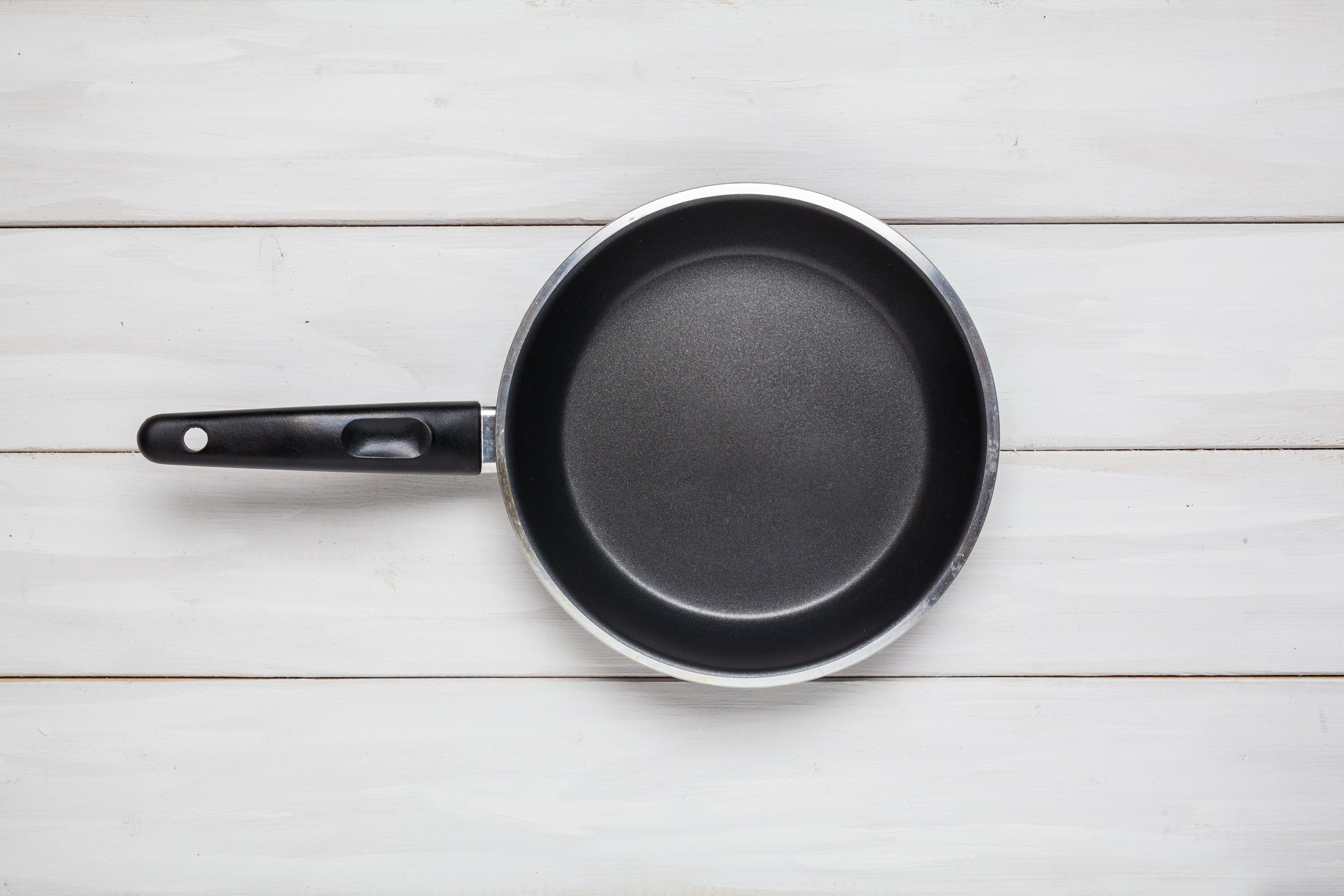There are many things out there that we don't need to worry about; however, if you are easily triggered, this is not the blog post for you. Now that we have that out of the way, there are many things we need to avoid during pregnancy and when we are trying to conceive. These are everyday items that I'm willing to bet we all have in our homes. As a doula, I work with clients that genuinely spend the majority of their day worrying. What is the solution? Let's work to control what we can be prepared for surprises, and please take a childbirth education class to understand physiological birth. Let's dive into some things we can control, so we have less to worry about daily. The things that are listed below are easy fixes and something that can be implemented today and trust me, you are going to want to move these items out of your daily routine.
I get it; non-stick cookware is convenient. It's also toxic. I also hear people talk about how they don't use it often or are cooking on it for a short time, and indeed it is ok. The answer to this is no. "The coating on non-stick cookware is made of a chemical called polytetrafluoroethylene (PTFE) that, when heated beyond 325 degrees F or when scratched, begins to release another chemical called perfluorooctanoate (PFOA). Suppose you're searing a steak, for example. In that case, your frying pan will easily reach 500 degrees F, practically guaranteeing the release of chemicals into your food and the air you breathe, even if your non-stick pan is in perfect condition." (You Searched for Non-Stick Cookware, n.d.) Let's talk about ceramic non-stick. These are different. According to research by Lily Nichols, as long as a food-grade glaze is used on ceramic cooking vessels, they're perfectly safe. If you need more clarification about the food-grade issue, the only consideration is that some glazes can contain lead. The FDA advises using lead-testing kits (check online or at a hardware store) to ensure your ceramic cooking vessels or dishes are food-safe. What can you use instead? Cast Iron. My favorite is the Lodge Cast Iron Skillet. Those convenient non-stick pans are not worth the toxic load they carry.
Candles. At the beginning of pregnancy and sometimes throughout, certain scents will bother you, so this may be off the table. In case it isn't, there are a few things to note. I know some love Bath and Body Works candles, but here's the thing. They are toxic. "Try to stay away from candles that are made from paraffin wax. "This is a petroleum-based wax that releases harmful chemicals when burned, including toluene and benzene (both of which are carcinogens). The fragrance that is used is another thing to pay attention to. The big problem with fragrance is that it's a catch-all term that can contain any number of mystery ingredients. Any time you see "fragrance" or "perfume" on a label, that means it's being used to hide the actual chemical makeup of the fragrance." (Goods, 2022) Many fragrances have been proven endocrine disruptors, so it's best to use candles fragranced with essential oils. Brands that I like are Skylar and Roseline's Candles.
Cosmetics, lotions, and self-care products. These, again, unfortunately, are full of ingredients that we need to be aware of. The skin is the largest organ in the body, and anything put on it absorbs into the bloodstream within seconds. First, there is a website that you can use that will help you discern what is in your products. EWG.org allows you to check over 87,550 products. This site is backed by science and is an excellent resource. According to a study by NCBI, "Phthalates, as key components in plastics, appear in many consumer products. The main phthalates in cosmetics and personal care products are dibutyl phthalate in nail polish, diethyl phthalate in perfumes and lotions, and dimethyl phthalate in hair spray. Often, their presence is not noted on labels." The interesting thing about this topic is that the cosmetics industry deems its products safe. This is their response: Marian Stanley, manager of the Phthalate Esters Panel of the American Chemistry Council, says, "Some of these concerns [from environmental groups] are based on high-dose animal testing. The exposure we see in people—and we have the CDC numbers to back that up—is remarkably low. Why bother getting rid of a highly useful product when there should be no concern?" (NCBI, 2005) Well, Marian, because it is toxic, that's why. A variety of clean beauty companies and websites offer an extensive offering of safe products. Credo Beauty is one of my favorites.
Control what you can. The above information is just some of the actions we can change in our daily routines that will make a difference. . I want you aware, then you can make the best decision for your family. We can't avoid everything. I know that some may think, I can't be afraid of and avoid everything, and I don't want you to/ I want you to take a look at things that you are exposed to daily, and if you think that you should make a change, then you should. The task of replacing all of our things can seem overwhelming. Start small. I promise you; you will be glad you did. Pick three, and move on from there. It's worth it!
XOXO-Holly
References:
Barrett JR. The ugly side of beauty products. Environ Health Perspect. 2005 Jan;113(1):A24. doi: 10.1289/ehp.113-a24. PMID: 15631956; PMCID: PMC1253722.
Goods, B. (2022, August 25). We Found The Best Non-Toxic Candles For a Safer Home. Better Goods. https://bettergoods.org/best-non-toxic-candles/
You searched for non stick cookware. (n.d.). Lily Nichols RDN. https://lilynicholsrdn.com/?s=non+stick+cookware





